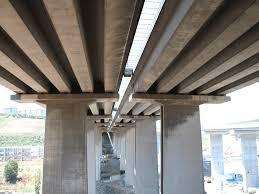Bridge Bearing Market Growth Challenges: Cost, Regulation, and Technological Barriers

The bridge bearing market is fundamental to the safety and durability of bridges globally, supporting critical infrastructure development. However, despite growing infrastructure investments, the market encounters significant growth challenges that hinder its full potential. These challenges range from cost pressures and regulatory hurdles to technological and operational barriers, all of which influence the pace and scale of market expansion.
High Material and Manufacturing Costs
One of the most pressing growth challenges in the bridge bearing market is the rising cost of raw materials and manufacturing. Materials such as stainless steel, PTFE (Polytetrafluoroethylene), and advanced elastomers, which enhance durability and performance, are expensive. Fluctuations in global commodity prices and supply chain disruptions further exacerbate cost volatility.
Manufacturers face the dual challenge of maintaining high-quality standards while keeping prices competitive. This is particularly difficult in price-sensitive markets, especially in developing regions where infrastructure budgets are limited. As a result, project developers may opt for lower-cost alternatives that compromise long-term durability, thereby restricting demand for premium bearings.
Complex and Diverse Regulatory Environment
The bridge bearing market operates within a highly regulated framework, with standards and certifications varying significantly across regions. Regulatory requirements related to safety, environmental compliance, and seismic resistance impose stringent testing and certification protocols.
Navigating this fragmented regulatory landscape adds complexity and cost, especially for companies targeting multiple geographies. Frequent updates and regional disparities in standards require ongoing product adaptations, increasing development timelines and expenses.
Moreover, in emerging markets, unclear or evolving regulations create uncertainty, delaying project approvals and market entry. Compliance burdens can deter new entrants and limit innovation.
Limited Adoption of Advanced Technologies
While technological innovation drives market growth, the adoption of advanced bearing technologies remains a challenge. Many infrastructure projects still rely on traditional bearing types, partly due to lack of awareness, perceived high costs, and technical expertise gaps.
The integration of smart technologies such as IoT sensors for structural health monitoring, though promising, is in its infancy. Infrastructure owners and operators may be hesitant to invest in new technologies without clear cost-benefit demonstrations.
This slow adoption hampers the market’s ability to transition toward more efficient, durable, and cost-effective solutions, limiting opportunities for differentiation and premium pricing.
Skilled Workforce Shortage
The bridge bearing market depends heavily on specialized engineering skills for design, manufacturing, installation, and maintenance. However, a global shortage of qualified professionals affects quality control and project execution.
Improper installation or maintenance can lead to bearing failures, undermining confidence in advanced bearing technologies and increasing lifecycle costs. Training programs and certifications are not widespread, especially in developing regions, exacerbating this skills gap.
This challenge affects market growth by increasing risks and costs associated with bridge bearing projects.
Environmental and Climatic Challenges
Bridge bearings must withstand a broad range of environmental stresses, including temperature extremes, moisture, corrosion, and seismic activity. Designing and manufacturing bearings that can perform reliably under these conditions is technically demanding and costly.
Climate change adds uncertainty, with more frequent and severe weather events impacting infrastructure resilience. Adapting bearing designs to meet these evolving conditions requires ongoing R&D investment and testing.
Balancing environmental resilience with affordability remains a significant barrier to widespread adoption of high-performance bearings.
Supply Chain Disruptions and Raw Material Dependence
Global supply chain instability poses a serious challenge to market growth. Many manufacturers depend on imported raw materials and components, making them vulnerable to transportation delays, tariff changes, and geopolitical tensions.
These disruptions increase lead times and production costs, affecting timely project delivery and pricing strategies. Supply chain vulnerabilities also complicate inventory management and risk mitigation.
Developing more resilient, localized supply chains requires substantial investment and strategic planning, which some manufacturers may find difficult to implement rapidly.
Market Awareness and Education Gaps
Despite their critical role, bridge bearings often receive limited attention from infrastructure developers and contractors during project planning. Lack of awareness regarding the benefits of advanced bearings and smart monitoring systems constrains demand.
Educational initiatives, technical workshops, and pilot projects demonstrating performance advantages are not uniformly conducted across regions, particularly in emerging markets.
This knowledge gap slows the adoption of innovative solutions, reducing growth opportunities for manufacturers offering premium products.
Urbanization and Project Execution Complexities
Rapid urbanization increases demand for new bridges but also introduces challenges related to land acquisition, regulatory approvals, and construction logistics in congested areas. Complex urban environments require customized bearing solutions and innovative installation techniques that are not yet widely available or cost-effective.
Delays and increased project complexity reduce market momentum and raise overall infrastructure costs.
Conclusion
The bridge bearing market faces multifaceted growth challenges including high costs, complex regulations, limited technology adoption, and supply chain vulnerabilities. Additionally, skills shortages, environmental demands, and market awareness gaps further constrain expansion.
Addressing these challenges requires collaborative efforts among manufacturers, regulators, and infrastructure stakeholders. Investment in innovation, workforce training, regulatory harmonization, and supply chain resilience will be key to unlocking the market’s full potential.
Overcoming these obstacles is essential to support the construction of safer, longer-lasting bridges that meet growing global infrastructure needs.
- Art
- Causes
- Crafts
- Dance
- Drinks
- Film
- Fitness
- Food
- Games
- Gardening
- Health
- Home
- Literature
- Music
- Networking
- Other
- Party
- Religion
- Shopping
- Sports
- Theater
- Wellness


